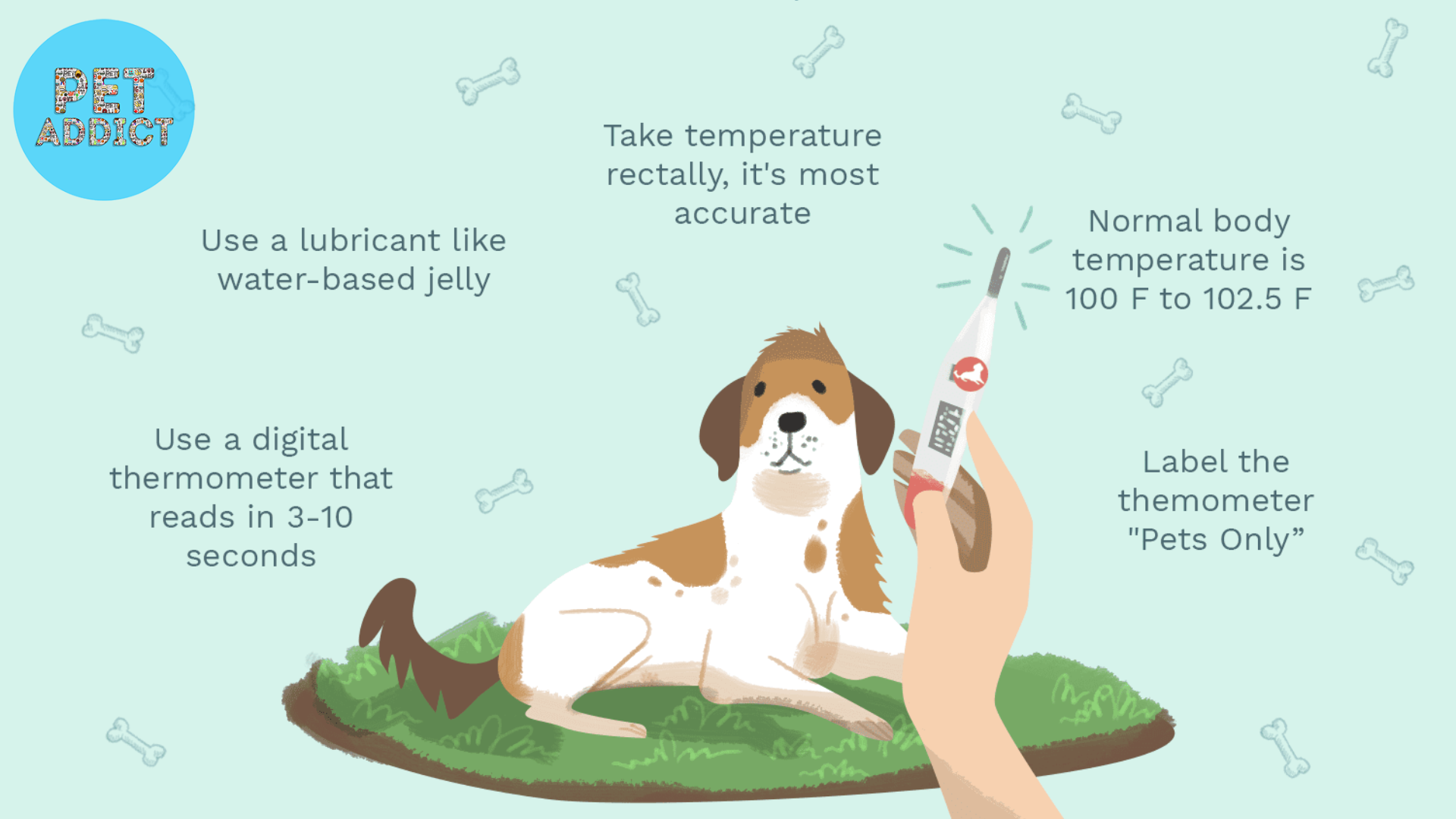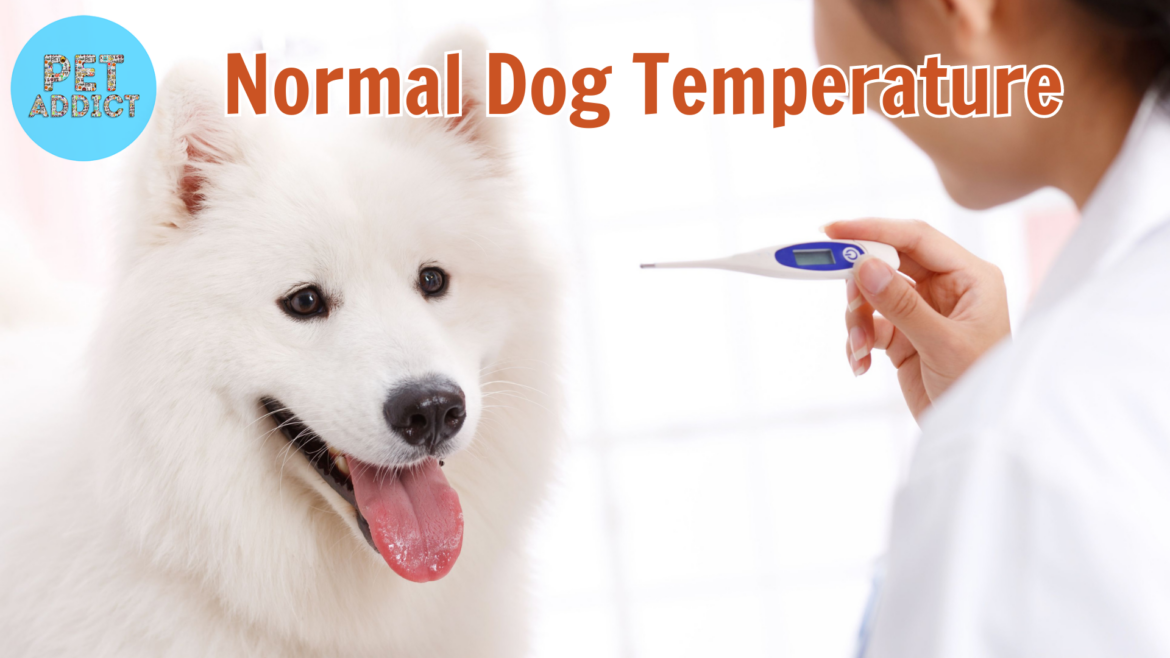If you are a dog owner, it is essential to be familiar with your furry friend’s normal body temperature. Dogs, like humans, maintain a specific body temperature range, which is crucial for their overall health and well-being. In this article, we will explore everything you need to know about normal dog temperature, how to measure it accurately, and what to do if it falls outside the typical range.
PetAddict.net – The best place where you can find everything about your pet!
What is the Normal Body Temperature for Dogs?
A dog’s normal body temperature typically ranges between 99.5°F to 102.5°F (37.5°C to 39.2°C). However, it’s essential to understand that the actual normal temperature can vary based on factors such as breed, size, and age. Smaller breeds, for example, tend to have slightly higher temperatures than larger breeds. Additionally, puppies might have a higher normal temperature than adult dogs.

Maintaining a stable body temperature is crucial for dogs as it plays a vital role in various physiological processes. Dogs are homeothermic animals, meaning they regulate their body temperature despite external environmental changes. This adaptation helps them stay healthy and function optimally.
Measuring a Dog’s Temperature
To measure a dog’s temperature accurately, there are several methods available. The most reliable method is the rectal temperature, where a pet thermometer is gently inserted into the dog’s rectum. Other methods include using an ear or armpit thermometer, but these may not provide as accurate readings as the rectal method.

As a responsible pet owner, it’s essential to choose the most practical and accurate approach to measure your dog’s temperature.
Factors Affecting Dog Temperature
A dog’s body temperature can be influenced by various factors. External factors, such as hot weather or a cold environment, can cause fluctuations in body temperature. Similarly, internal factors, like fever due to infections or hormonal changes, can also affect a dog’s temperature.
Understanding these factors can help pet owners identify potential issues and take timely action.

Signs of Abnormal Temperature in Dogs
Recognizing signs of abnormal temperature is crucial for dog owners. Symptoms like excessive panting, shivering, lethargy, loss of appetite, or vomiting may indicate a fever or hypothermia. Identifying these signs early can help prevent more severe health problems.

What to Do If Your Dog’s Temperature Is Abnormal?
If your dog’s temperature is abnormal, take immediate action by contacting your veterinarian. Stay calm and observe your dog’s behavior for any other signs of illness or distress. Inform your vet about the temperature reading and any accompanying symptoms. Follow their advice on whether to bring your dog in for a physical examination. Timely intervention can help identify the cause of the abnormal temperature and initiate appropriate treatment. Avoid self-medicating your dog or delaying seeking professional help. Remember, your veterinarian is the best person to provide guidance and ensure your dog’s health and well-being.
Importance of Monitoring Temperature in Specific Situations
In certain situations, such as after surgery or during pregnancy, monitoring your dog’s temperature becomes critical. Temperature changes can provide insights into potential health issues that need immediate attention.
Seasonal Variations and Impact on Dog Temperature

Dogs, like humans, adapt to different seasons and weather conditions. However, extreme temperatures can be challenging for them to handle. As a pet owner, you should take extra care to keep your dog comfortable during harsh weather.
The Role of Temperature in Veterinary Diagnosis
Veterinarians use a dog’s temperature as one of the diagnostic tools to identify various illnesses and health conditions. This section sheds light on specific cases where temperature is crucial for an accurate diagnosis.
Emergency Situations and Temperature
Certain emergencies, such as heatstroke or hypothermia, require immediate attention. Knowing how to handle these situations before reaching the vet can be life-saving for your beloved pet.
Conclusion
Understanding your dog’s normal body temperature is an essential aspect of responsible pet ownership. By regularly monitoring their temperature and being aware of potential factors that can affect it, you can contribute to your dog’s overall well-being. Remember, early detection of abnormal temperature an
FAQs
1. How often should I measure my dog’s temperature? Regular temperature checks are not necessary unless your dog shows symptoms of illness or you are monitoring specific health conditions. Always consult your veterinarian for guidance.
2. Can I use a regular thermometer for my dog? No, it’s not recommended to use a regular thermometer meant for humans. Invest in a pet-specific thermometer for accurate readings.
3. My dog’s temperature is slightly higher than the normal range. Should I be concerned? If the difference is minor and your dog shows no other signs of illness, closely monitor them. However, if you notice any alarming symptoms, contact your vet.
4. Can stress affect my dog’s body temperature? Yes, stress can cause temporary fluctuations in a dog’s body temperature. Ensure your dog has a calm and comfortable environment.
5. When should I seek emergency veterinary care regarding my dog’s temperature? If your dog’s temperature is excessively high or low, and they show severe symptoms like seizures or loss of consciousness, seek immediate veterinary care.




